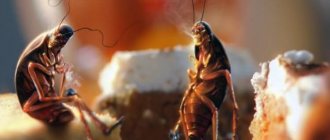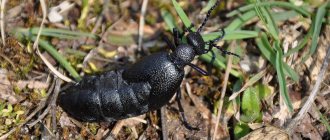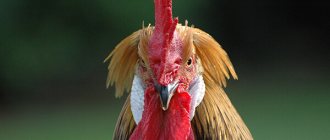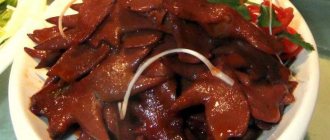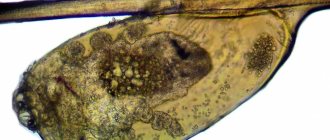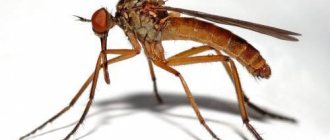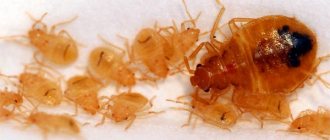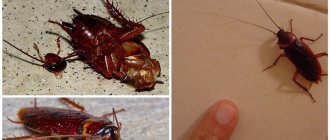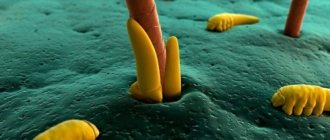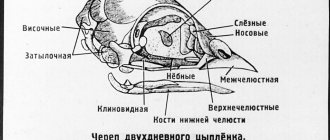Share Share Follow Tweet
To be honest, when I first heard the story that a rooster was able to live without a head for a year and a half, I decided that it was a journalistic canard. Judge for yourself: the head is not some kind of wing, paw or beak. There is the brain, which is responsible for literally everything in an animal!..
Nevertheless, this incident occurred in the 1940s - the era of photography, and therefore a lot of visual evidence of the phenomenon has been preserved. In addition, the bird’s headlessness was certified by scientists and the Guinness Book of Records, and in Mike’s cockerel’s hometown he is still revered as a national hero.
The story of Mike the headless rooster (4 photos + video)
On September 10, 1945, an American farmer with culinary needs cut off the head of a rooster named “Mike.”
Surprisingly, the rooster did not die and the inquisitive farmer decided to leave him alive. Mike lived another 2 years, the farmer fed him with a pipette, although Mike tried to shovel the food down his throat... ...A young cockerel, five and a half months old, fusses in the dust outside his chicken coop in Fruita, Colorado. The unsuspecting bird looked amazing on this now famous day.
Clara Olsen was planning to cook chicken for dinner. Her husband, Lloyd Olsen, was sent to the chicken coop on a very ordinary mission - to prepare the chicken for its meeting with the frying pan. But the solution to the problem turned out to be not entirely ordinary. Lloyd knew his mother-in-law would be dining with them and that she loved chicken neck.
He aimed the ax so as to leave as much neck as possible. “It was important to please your mother-in-law both in the 40s of the last century and today.”
The skillful strike is completed, and the chicken now looks more like a fresh poultry carcass. Then the resilient bird recovered from the shock and “life began to get better.” Mike (it is unknown when the famous rooster got his nickname) returned to what he was doing before the execution. He went looking for crumbs around the yard and preening the feathers just like the rest of his coop buddies.
When Olsen found Mike sleeping with his “head” under his wing the next morning, he decided that since Mike had survived, he should continue to live. Lloyd came up with a way to feed and water him. Mike was given grain and water using a pipette.
It became obvious that Mike was no ordinary rooster.
After a week of Mike's new life, Olsen picked him up and drove him 250 miles to the University of Utah in Salt Lake City. Skeptical scientists tried to answer all the questions regarding Mike's amazing ability to live without a head. It was determined that the ax blade had missed the jugular vein, and a blood clot prevented Mike from bleeding to death.
Although most of his head was missing, most of his brain stem and one ear remained. Since most of a chicken's reflexes are controlled by the brain stem, Mike was able to remain quite healthy.
IN THE 18 MONTHS that Mike lived as “The Amazing Headless Chicken,” he went from a mere 2.5 pounds to nearly 8 pounds. In an interview, Olsen said Mike was “a perfect example of a healthy chicken except for the missing head.”
Some Fruit residents also remember Mike - “he was a big fat chicken who didn't know he had no head” - “he seemed as happy as any other chicken.”
The Miracle Rooster was meant to be seen by everyone, and Olsen did a national tour. Curious people in New York, Atlantic City, Los Angeles and San Diego paid 25 cents to see Mike.
“The Amazing Chicken” was valued at $10,000 and insured for the same amount. His fame and fortune further improved after publications in Life and Time Magazine.
This goes without saying, Everything was registered in the Guinness Book of Records.
Returning from one of these road trips, Olsen stopped at a motel in the Arizona desert. In the middle of the night, Mike began to choke. Lloyd couldn't quickly find an eyedropper to clear Mike's throat. And Mike left this mortal coil...
Now the town of Fruita hosts an annual festival to celebrate Mike's impressive will to live. The program includes concerts, a car show, a running competition (it’s called “Run Like a Headless Chicken”) and other joys of life.
Source: https://paranormal-news.ru/news/2009-07-10-1892
Death and immortality
Mike lived without a head for 18 months, turning from a young rooster weighing a little over a kilogram into a real seasoned rooster weighing about two and a half kilograms. And it is unknown how much longer this miracle of nature would have been running around the earth if the tragedy had not happened in March 1947. Once while traveling, Lloyd Olsen stopped at a hotel in Phoenix (Arizona), and there in the middle of the night Mike had an attack of suffocation. And Lloyd, as luck would have it, didn’t have a syringe on hand to clear the cockerel’s throat, and he suffocated.
This is how the famous “The Amazing Headless Chicken” died. But the fame of the wonderful Mike is still alive today. “He was a big fat cockerel who didn’t even seem to realize he didn’t have a head. Mike seemed as happy as any other chicken,” recall the residents of Fruita, who were lucky enough to see the wonderful bird.
Now in this city there is a monument to the headless cockerel, and since May 1999, the “Mike the Headless Chicken” festival has been held in Fruita. The festival program includes concerts, a running competition called “Run Like a Headless Chicken,” a car show, and throwing eggs at a distance. Visitors are also offered a varied menu of chicken dishes.
A headless rooster lived for 18 months. Amazing story
Mike was the name of the rooster who lived 18 months after his head was cut off. The story was loud, and has already managed to acquire many rumors over the past 70 years.
A Wyandotte rooster named Mike lived in the chicken coop of Lloyd Olsen, an ordinary farmer from Fruita, Colorado, USA. Anticipating dinner, the farmer went into the yard to choose a suitable chicken for the soup.
Lloyd Olsen chose a 5.5 month old rooster. The man took the rooster, placed it on a stump, swung an ax and cut off Mike's head. After the rooster was on the ground, the farmer noticed that the rooster was still alive. Rooster Mike didn't move for a while, but then he got up and walked away as if nothing had happened.
Mike's head was almost completely severed. The ax missed the jugular vein on impact, leaving one ear and most of the brain stem intact. The farmer was shocked, and since the rooster did not die, Olsen did not finish it off, but took it back to the chicken coop.
The rooster Mike spent the first night sleeping on a perch, hiding his neck under his wing. After the bird did not die, a surprised Olsen decided to continue caring for Mike.
The man gave him a mixture of milk and water using a pipette and fed him small grains of corn. The entrance to Mike's esophagus sometimes became clogged with mucus, and Olsen used a special syringe to clear it.
- The most unusual animals from around the world
Mike the Rooster was able to balance on a perch and walk awkwardly; he even tried to preen his feathers and crow, although he was unable to do either.
Despite his new unusual center of gravity, Mike could easily stay on the high perch without falling. His scream, however, was less impressive and consisted only of a gurgling sound in his throat. Mike also tried to clean himself and peck food.
In addition, Mike's weight continued to increase: Olsen said that at the time of decapitation, Mike weighed about 2.5 pounds, while at the time of his death he weighed almost 8 pounds.
After some time, the rooster was brought by its owner to the University of Utah in Salt Lake City for scientists to document the fact, since even then many considered this story a hoax.
Many roosters, “fellow villagers” of Mike, paid with their lives thanks to the desire of their owners to repeat Lloyd’s “successful” blow. They chopped up dozens of roosters and hens, trying to aim as close to the head as possible, but all in vain - no one succeeded in getting a second Mike.
Once word of the rooster spread, Mike began a "career" as a touring attraction in the company of other similar creatures, such as a two-headed calf, and others. He was also photographed by reporters from dozens of magazines and newspapers, including Time and Life magazines.
Mike was exhibited to the public for a fee of twenty-five cents. At the peak of its popularity, the chicken brought in $4,500 a month and was valued at $10,000.
A pickled chicken head was often displayed next to Mike, pretending to be his head, but in reality his head was eaten by a cat.
In March 1947, at a motel in Phoenix in the middle of the night during a stop on the way home, Mike began to choke. Because the Olsens had inadvertently left food and syringes for cleaning out the esophagus at the show's location the day before, they were unable to save Mike.
With an ax - for glory
Many in Fruita, jealous of farmer Lloyd Olsen's success, tried to replicate his successful ax blow. And quite a few chicken heads fell off due to the hope of their owners that one of the birds would be able to repeat Mike’s fate. But, alas, these heads fell completely in vain, since most of the chickens died soon after beheading, and only a few managed to live for a couple of days.
There was, however, also a rooster named Lucky, who lived for 11 whole days, but in the end he accidentally climbed into the chimney and died. In general, so far the record for a headless chicken's life remains with Mike, which is confirmed by an entry in the Guinness Book of Records.
Author: Oleg GOROSOV
Headless Rooster Mike
A curious case involving a Wyandotte rooster named Mike is widely known. His owner, American farmer Lloyd Olsen from the Colorado city of Frute, cut off his head on September 10, 1945.
After this, the rooster lived for 18 months (until March 1947). Miracle Mike's owner took him to the University of Utah in Salt Lake City to have the event documented.
He did this in order to stop gossip about the hoax of this case.
The fact is that after the head of the rooster was cut off, the base of the brain and one ear remained unharmed. The farmer did not hit the jugular vein when hitting him with an ax, which also affected the “resurrection” of the bird. For several minutes after the beheading, the rooster did not move, and then stood up and walked away as if nothing had happened.
Michael spent the first night without a head, hiding his neck under his wing, according to an old habit. Of course, he was no longer able to scream; instead, only the gurgling sounds of his throat could be heard, but he was able to sit on the perch and walk awkwardly. He even tried to clean feathers and peck grains.
It's good that he didn't realize what happened to him!
Mike's owner decided to take care of his pet, from which it was not possible to make soup at the request of the farmer's wife on that ill-fated day for the bird, September 10. Olsen began to water and feed Mike with a pipette and removed mucus from the esophagus with a syringe. The rooster's weight grew - at the time of decapitation, Mike weighed 2.5 pounds, and at the time of death - almost 8.
After the story of Mike the rooster became widely known, a wave of imitations spread across the country - farmers wanted to repeat this experiment, but no other chicken lived more than two days without a head. Olsen began to make money from his headless rooster, showing it for 25 cents per person.
Thus, in terms of 2010 prices, he earned 48 thousand dollars a month. However, this fairy tale had to end for Olsen: in March 1947, in one of the motels where the farmer and his wife were staying, in the middle of the night the bird began to suffocate. Because the Olsens forgot to bring food and syringes, they were unable to save Mike.
For the city of Fruite, Mike the rooster has become a symbol - since 1999, “Mike the Headless Chicken Day” has been celebrated annually (the third weekend in May). Various events with games and other folk entertainment are organized. On a special website dedicated to Mike, they sell T-shirts, caps, socks, thermoses, posters and much more with the symbols of the headless miracle rooster.
Source: https://selfire.com/2013/03/5885/
Living chicken carcass
After the rooster's head was cut off, its body began to resemble an ordinary chicken carcass prepared for dinner.
However, the rooster, now headless, had no intention of dying. Instead, after a few minutes he got up, shook himself busily, and began running around the yard.
When the headless chicken Mike was discovered alive and unharmed, the owner was shocked.
Lloyd decided to watch the bird. He attributed the fact of the rooster's survivability to ordinary death agony. The farmer had previously observed it in the chickens he killed.
The rooster lived without a head for 18 months!
To be honest, when I first heard the story that a rooster was able to live without a head for a year and a half, I decided that it was a journalistic canard. Judge for yourself: the head is not some kind of wing, paw or beak. There is the brain, which is responsible for literally everything in an animal!..
Nevertheless, this incident occurred in the 1940s - the era of photography, and therefore a lot of visual evidence of the phenomenon has been preserved. In addition, the bird’s headlessness was certified by scientists and the Guinness Book of Records, and in Mike’s cockerel’s hometown he is still revered as a national hero.
How Mike lost his head
Until September 10, 1945, the cockerel was a completely ordinary bird - it lived on one of the farms in the city of Fruita, Colorado, US, among dozens of its fellows.
He didn’t even have a name then: he was called Mike much later, when his supernatural desire to survive was discovered. In general, this autumn day was supposed to be the last for our hero, since the owner of the farm, Clara Olsen, decided to cook chicken for dinner on the occasion of the arrival visiting her mother.
Clara's husband, Lloyd Olsen, took an ax, went to the chicken coop, caught a five and a half month old bird, laid it on the block and with one blow cut off the cockerel's head. The fact that he jumped up and ran with his head cut off did not really surprise Lloyd - I think many people have heard that headless chickens can move for about five minutes.
But something else struck the farmer: when he caught up with his victim, it turned out that he was walking among the other inhabitants of the poultry yard as if nothing had happened. The headless cockerel still did not die, and Lloyd Olsen decided to leave him alone and caught another bird for the table. And when the farmer entered the chicken coop in the morning, the headless rooster was sleeping peacefully on the perch, having tucked the bloody stump of his neck under his wing.
His mother-in-law saved him
Interested in the unusual case, Lloyd Olsen decided to help the bird survive. He came up with a way to feed her: he used a pipette to send grains and water directly into the esophagus. Sometimes the cockerel began to choke - mucus accumulated in his throat, and then the farmer had to pump it out with a syringe. Days passed, but the cockerel lived.
When a week had passed since the beheading, Lloyd decided to show this phenomenon to scientists and went to the University of Salt Lake City, located in Utah, 250 miles from Fruita.
At first, scientists were stumped - not a single animal can live without a brain! But then, after doing a full examination of the cockerel, we figured out what was going on.
It turns out that Mike’s life was saved by... Lloyd’s mother-in-law!
The fact is that the woman really loved chicken necks, and therefore, when cutting off the rooster’s head, Lloyd tried to preserve this part of the body as much as possible. That is why the ax blade passed without hitting the jugular vein, and the blood clotted, preventing Mike from dying from its loss.
The spinal cord, which is responsible for most reflexes in birds, was also virtually undamaged. In addition, the cockerel had one auditory opening left, so he retained the ability to hear. Perhaps the only thing Mike lost when he lost his head was his eyesight and the ability to taste food.
Otherwise, the cockerel, so to speak, was quite healthy.
Life after death
The rumor about Mike's fantastic vitality quickly spread throughout the States. The most popular American media colorfully talked about him, giving the cockerel the nickname “The Amazing Headless Chicken.”
And, of course, soon enterprising people appeared on Olsen’s farm, who explained to Lloyd that he had a gold mine in his hands and offered a lucrative contract.
The farmer did not miss his luck and, taking his “golden cockerel”, went on a tour of America along with other unusual animals.
For example, a two-headed calf traveled as part of the “delegation”.
New York, Atlantic City, Los Angeles, San Diego - everywhere Mike was greeted by enthusiastic fans and gladly parted with 25 cents for the opportunity to look at the headless rooster.
At the peak of its popularity, this bird brought Lloyd a solid income - four and a half thousand dollars a month (at the 2010 exchange rate - $48 thousand), so the farmer even had to insure Mike.
Insurers estimated this phenomenon at 10 thousand dollars. His severed head also traveled with the cockerel: Lloyd carried it preserved in alcohol in a jar and showed it to everyone. Although there were rumors that the farmer cut off this head from another rooster, and the real one was eaten by a cat shortly after the beheading. After all, no one knew then what kind of nugget the headless bird would turn out to be.
The first hours of Mike's life, or why his owner didn't kill him
Before night fell, the rooster not only lived without a head, but walked around the chicken coop, climbed onto the perch and even attempted to peck grains.
Lloyd's surprise knew no bounds when he entered the chicken coop in the morning and found Mike the rooster there, quite alive. He slept peacefully on the perch, with the severed part under his wing.
It turns out that the rooster was easily able to live without his head the first night, snoring peacefully on the roost.
And then Lloyd Olsen decided to release such an unusual bird. What guided the farmer:
- ordinary curiosity;
- scientific interest;
- passion for profit.
Now it does not matter. The main thing is that Mike was able to live without his head for almost a year and a half. True, not without human help.
Mike the Headless Rooster – ZooPicture.ru
The story of this rooster proved to the whole world that the absence of a head is not a reason to give up one’s life. All the events took place in the second half of the forties of the last century, and, perhaps, the reason for the indestructible, even with the help of an ax, love of life was such a long-awaited peace, when everyone, including the inhabitants of the chicken coops, believed in the possibility of a bright future.
The most persistent, and, accordingly, the most famous of the beheaded roosters turned out to be an inhabitant of a farmstead in the small town of Fruita, Colorado.
By a strange accident, residents periodically disappeared from the chicken coop, but Mike (under this name he would later gain world fame and a personal entry in the Guinness Book of Records) never attached any importance to this until the black shadow of an ax hung over him, preparing to sacrifice him to the visiting relative of the owners.
You can say that Mike was born under a lucky star, because just one culinary addiction of his future guest extended his life by eighteen months.
The mother of the rooster's owner, Clara Olsen, loved the chicken neck most of all, so her son-in-law Lloyd, trying to please his mother-in-law, chopped off Mike's head so as to keep the tidbit longer; as a result, one third of the head, along with the ear, remained with its owner.
Having done the job, Lloyd calmly went to bed, and the next morning he discovered that the headless rooster was alive, healthy and feeling great. The farmer saw this as a sign from above, and another inhabitant of the chicken coop went into the soup.
And for headless Mike, this was the morning he woke up famous. Despite the absence of such an important organ as a head, the bird needed to eat somehow, and the resourceful Lloyd came up with the idea of feeding it from a pipette through the throat.
To show the miracle rooster to knowledgeable people, Olsen had to travel two hundred and fifty miles, where bright minds from Salt Lake City University unraveled the secret of Mike's survivability. As it turned out, while chopping the head, the farmer did not touch the jugular vein, and the resulting blood clot saved the rooster from losing blood. Part of the trunk also remained untouched, and this was enough for the bird to remain alive.
Lloyd Olsen considered it unacceptable to hide Mike from his compatriots and went on a tour of the United States.
For just twenty-five cents, anyone could see the miracle bird - Headless Mike.
The rooster's travels were covered in the pages of such respected publications as Time and Life magazines, and he himself was insured for ten thousand dollars (a very significant amount for the post-war years).
Who knows how much longer Mike could have lived if not for the tragic circumstance that cut his life short. One night, in one of the motels, Mike began to make loud wheezing sounds, waking up the owner, who tried to clear the bird's throat. But, unfortunately, this did not save the legendary Mike, and he died after living without his head for eighteen months.
Two other roosters, Butch from California and an unnamed rooster from Ohio, who shared the glory of living without a head with Mike, spent just over a month in this condition. Unlike Mike, who lived in recent months in the blaze of glory, animal rights activists tried to kill these worthy birds a second time, but they failed thanks to the intervention of lawyers.
Source: https://www.ZooPicture.ru/bezgolovyj-petux-majk/
News
Headless Rooster Mike, October 1945.
Headless Mike the Rooster, also known as Miracle Mike (April 1945 – March 1947), was a Wyandotte rooster who gained notoriety for surviving 18 months after his head was almost completely cut off.
Becoming famous almost immediately after the event, it was brought by its owner to the University of Utah in Salt Lake City for scientists to document the fact, since even then many considered this story a hoax.
On September 10, 1945, farmer Lloyd Olsen from Fruita, Colorado, USA, went to the yard (at the request of his wife) to choose a chicken for dinner. The Olsen's chose a 5.5 month old rooster named Mike. The ax missed the jugular vein on impact, leaving one ear and most of the brain stem intact.
Despite Olsen's failed attempt, Mike was still able to balance on the perch and walk awkwardly; he even tried to rush and scream, although none of this worked for him. After the bird did not die, a surprised Olsen decided to continue caring for Mike, constantly feeding him a mixture of milk and water using a dropper and feeding him small kernels of corn.
Using his new unusual center of gravity, Mike could easily stay on the high pole without falling. His scream, however, was less impressive and consisted only of a gurgling sound in his throat. Mike also tried to clean himself and peck food.
As soon as word spread about him, Mike began a "career" as a touring attraction in the company of other similar creatures, such as a two-headed calf. He was also photographed by reporters from dozens of magazines and newspapers, including Time and Life magazines.
Mike was exhibited to the public for a fee of twenty-five cents. At the peak of its popularity, the chicken brought in $4,500 a month ($48,000 in 2010 prices) and was valued at $10,000. Olsen's success led to a wave of chicken beheadings in hopes of repeating the same, but no other beheaded chickens survived more than a day or two.
In March 1947, at a motel in Phoenix in the middle of the night during a stop on the way home, Mike began to choke. Because the Olsens had accidentally left food and syringes at the show's location the day before, they were unable to save Mike.
Lloyd Olsen claimed that he sold the bird, and as a result stories about Mike continued to circulate throughout the country until late 1949.
Start of a new life
The chicken's fate would have been sealed. If it weren't for a strange accident that saved Mike's life.
The farmer knew that his mother-in-law, invited to the celebration, loved to eat chicken necks. And to please her, Lloyd tried to cut off the bird's head while completely preserving this part.
Perhaps the owner accidentally hit the ax in the wrong place. It is impossible to say with certainty. But as a result, the headless rooster deserved a second life. Of course, not without the participation of the farmer. And he lived another 18 months.
